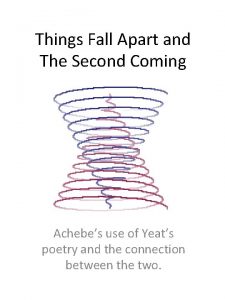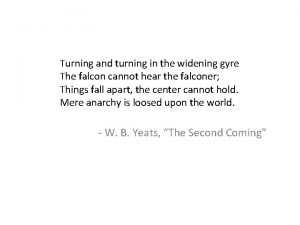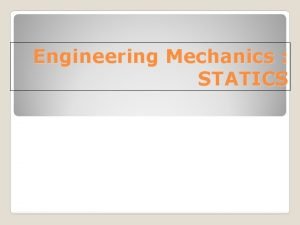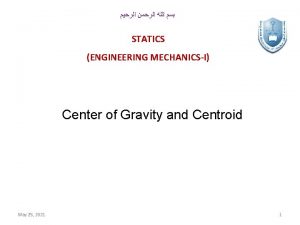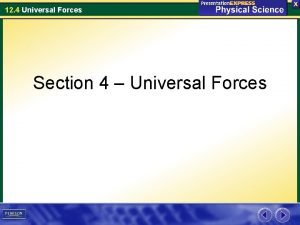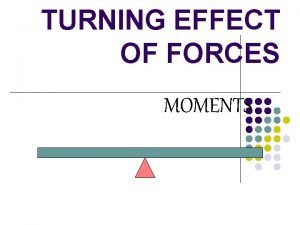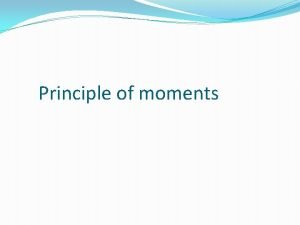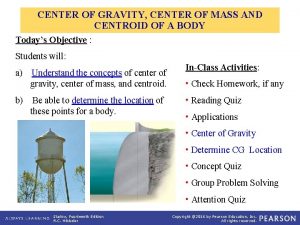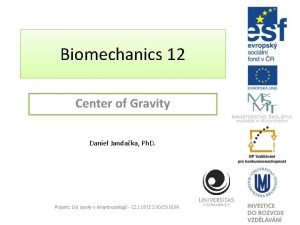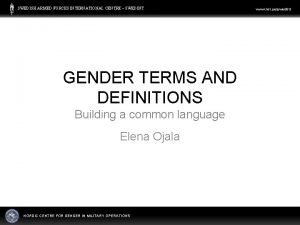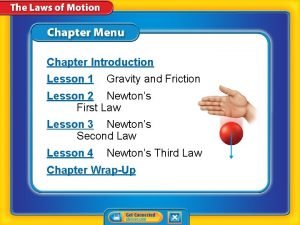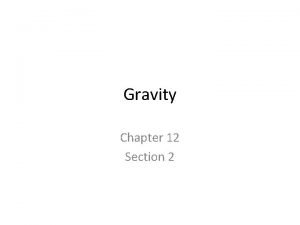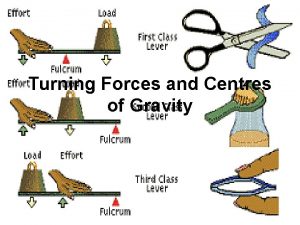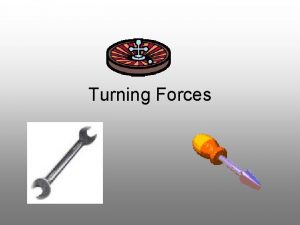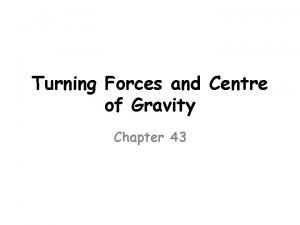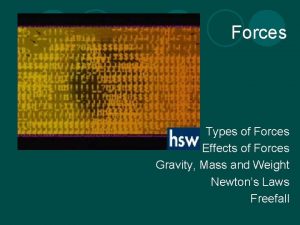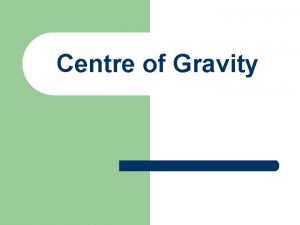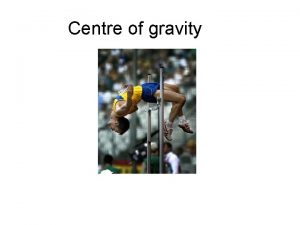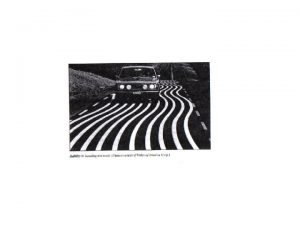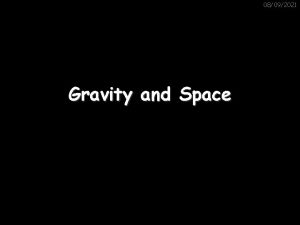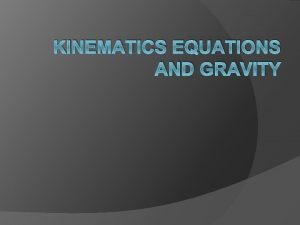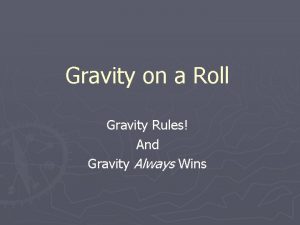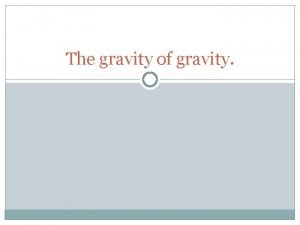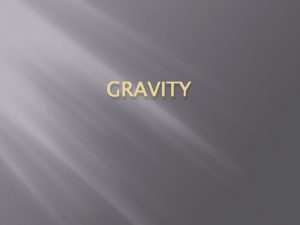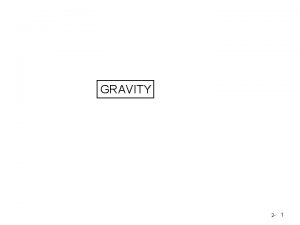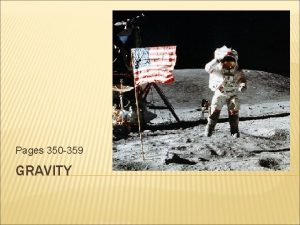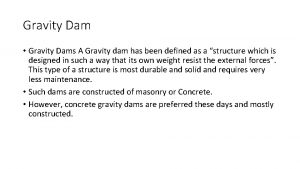Turning forces and Centre of Gravity Chapter 43


























- Slides: 26

Turning forces and Centre of Gravity Chapter 43

The Turning effect of a force The turning effect of a force can be increased in 2 ways. 1. 2. Increasing the size of the force itself. By increasing the distance of the applied force to the fulcrum. • The point about which the object turns is referred to as the fulcrum.

Moment of a force • The moment of the force or the turning effect of the force. • Moment of a force = (Force) x (perpendicular distance from the force to the fulcrum)

A Lever used to turn a tap

What is the moment of the force(turning effect) that is being exerted in the following diagram? Answer: Moment = Force x distance from fulcrum 40 N x 0. 2 m =8 Nm

Levers • A lever is a rigid body which is free to turn about a fixed point called the fulcrum. Examples of Levers: A door, wheelbarrow, crowbar, see-saw,

Here are 3 examples of lever’s. In each case identify which is the effort, load and fulcrum

Answer

Levers • Levers can be used to exert a large force over a small distance at one end by exerting only a small force over a greater distance at the other

The law of the lever The Law of the lever states that when a lever is balanced , the sum of the clockwise moments are equal to the anti-clockwise moment.

Balancing a Meter Stick

Is This Meter Stick Balanced?

Is this lever balanced? Left Hand side Moment = Force x Distance 1 N x 40 cm = 40 Ncm Right Hand Side Moment = Force x Distance = 2 N X 25 cm = 50 Ncm Therefore The Lever is not Balanced. Where must the 2 N weight be placed to have a balanced meter stick?

What is the value of y?

Where must the 32 N weight be hung to balance the meter stick?

Find the Weight of the stone

Question: Calculate where the 5 N weight must be placed so as to have a balanced lever?

Left Hand Side Right hand side 5 x y = 5 y 8 x 12 = 96 13 x 7 = 91 6 x 18 = 108 2 x 46 = 92 ------------Total 91 + 108 + 92 =291 -----------Total 96 + 5 Y 5 Y = 291 - 96 5 Y = 195 Y = 39 Therefore the 5 N weight is at the 11 cm mark

Center of Gravity. • The center of gravity of an object is the point through which the weight of an object appears to act.

To find the center of gravity of a sheet of cardboard:

Equilibrium • A body is in stable equilibrium if, when slightly moved or tilted, its center of gravity rises. • A body is in unstable equilibrium if, when slightly moved or tilted, its center of gravity falls. • A body is in neutral equilibrium if, when slightly moved or tilted, its center of gravity neither rises or falls.

Types of Equilibrium

Equilibrium

Equilibrium

• Objects in stable equilibrium will have a wide base and a low center of gravity. In designing a bus, for example, a low center of gravity makes a bus more stable and less likely to topple over.

Unstable equilibrium
 Centroid engineering mechanics
Centroid engineering mechanics Difference between centre of mass and centre of gravity
Difference between centre of mass and centre of gravity Turning and turning in the widening gyre
Turning and turning in the widening gyre Surely the second coming is at hand
Surely the second coming is at hand Turning and turning in the widening gyre
Turning and turning in the widening gyre Gravity for dummies and dummies for gravity equations
Gravity for dummies and dummies for gravity equations Centroid in engineering mechanics
Centroid in engineering mechanics What is centroid in mechanics
What is centroid in mechanics What are the 4 universal forces
What are the 4 universal forces Moment definition
Moment definition What is the moment acting on the seesaw
What is the moment acting on the seesaw Center of mass
Center of mass Center of gravity biomechanics
Center of gravity biomechanics Stability in physical education
Stability in physical education Angular motion pdhpe
Angular motion pdhpe Example of like and unlike parallel forces
Example of like and unlike parallel forces Contact and non contact forces
Contact and non contact forces Unbalanced force
Unbalanced force What are constructive and destructive forces
What are constructive and destructive forces Www.mil.se
Www.mil.se Nordic centre for gender in military operations
Nordic centre for gender in military operations The forces shown above are pushing/pulling forces
The forces shown above are pushing/pulling forces Intermolecular vs intramolecular
Intermolecular vs intramolecular Similarities of intermolecular and intramolecular forces
Similarities of intermolecular and intramolecular forces Inter vs intramolecular forces
Inter vs intramolecular forces Chapter 2 lesson 1 gravity and friction
Chapter 2 lesson 1 gravity and friction Chapter 12 section 2 gravity answer key
Chapter 12 section 2 gravity answer key


